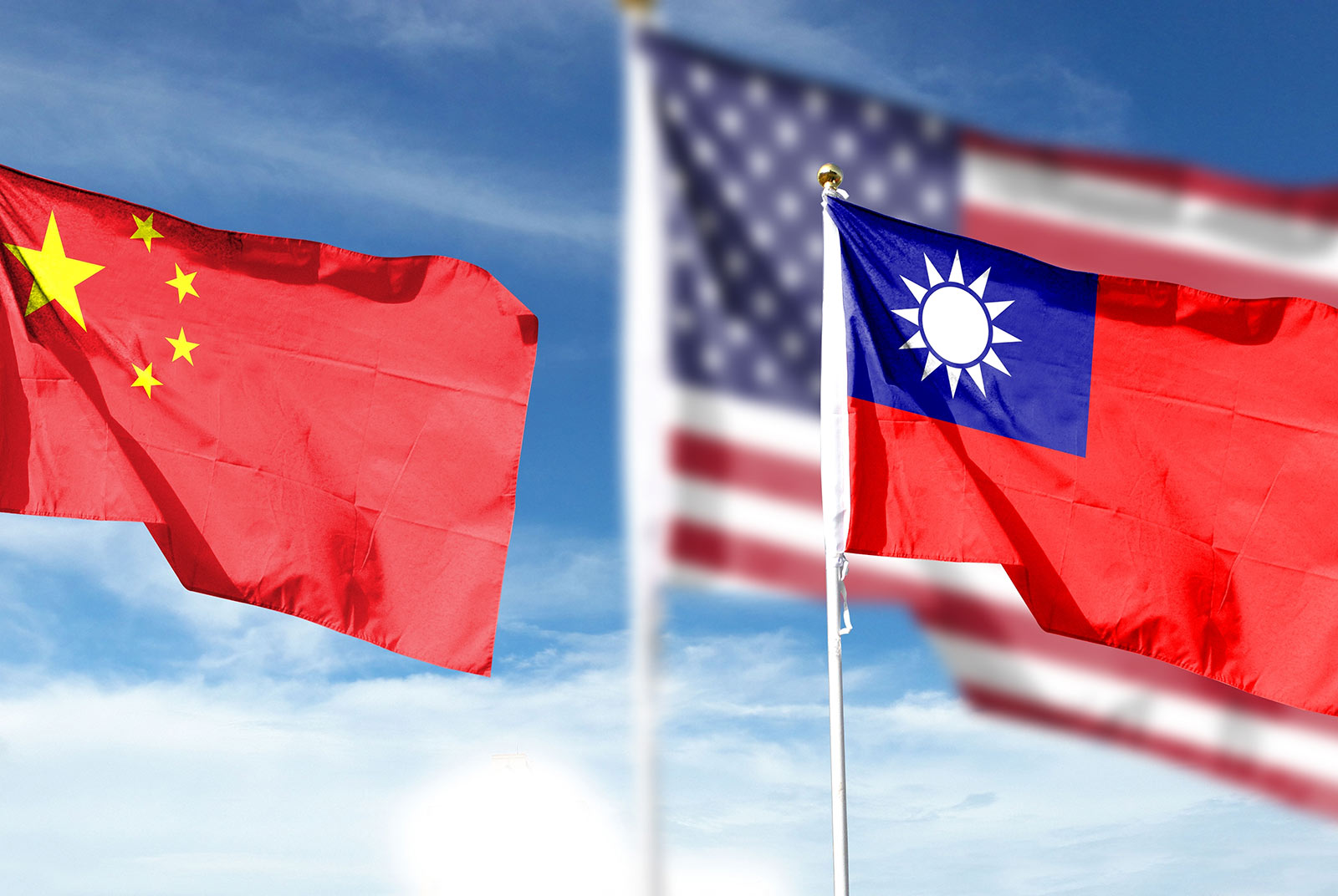Sunflower 10 years on: Taiwan Lost Golden Opportunity to Diversify Trade and Deepen Regional Economic Integration

Source:Ming-Tang Huang
In this op-ed, Howard Shen explores the aftermath of Taiwan's decision not to ratify the Cross-Strait Service Trade Agreement (CSSTA) during the Sunflower Movement, argues that rejection not only missed a chance to lessen trade dependence on China but also hindered Taiwan's potential participation in regional economic groups.
Views
Sunflower 10 years on: Taiwan Lost Golden Opportunity to Diversify Trade and Deepen Regional Economic Integration
By Howard Shenweb only
During the most recent election cycle in Taiwan, both the main opposition party, the Kuomintang (KMT), and the third party, the Taiwan People’s Party, brought up the Cross-Strait Service Trade Agreement (CSSTA) at some point during their presidential campaigns. The two parties hinted at revamping the previously failed attempt of ratification of the agreement in the Legislative Yuan.
The CSSTA was signed between two sides of the Strait in 2013 during Ma Ying-Jeou’s presidency and, if ratified, would have liberalized cross-Strait trade of service industries such as banking, healthcare, and tourism.
The ruling Democratic Progressive Party (DPP) in Taiwan ascended into power for the second time in 2016 due to their vocal support for the student-led anti-CSSTA demonstration in 2014, the Sunflower Movement. In the evening of March 18, 2014, protestors of the Movement stormed into and occupied the Legislative Yuan, the Taiwanese legislature, blocking the ratification of the CSSTA.
The DPP’s alignment with the Sunflower cause led them to achieve a historic victory in the Taiwanese local elections later the same year, culminating into the DPP’s unprecedented control over all branches of government after the 2016 national elections.
With that, the DPP reigned over Taiwanese politics with one clear mandate: The central government must calm people’s anxiety (justified or not) over economic overreliance on mainland China by reducing it.
However, the Tsai administration’s diversification effort was met with limited success.
According to the Ministry of Finance of the Republic of China (Taiwan), the percentage of Taiwan’s exports to mainland China in Taiwan’s total export rose to an all-time high at the end of Tsai’s first term, from, Tsai’s predecessor, Ma Ying-Jeou’s highest at 41.9 percent in 2010 and 39.5 percent at the end of Ma’s eight-year tenure in 2015 to 43.9 percent in 2020. The number only dropped recently as mainland China’s economy dwindled.
Ten years after the Sunflower Movement, a seemingly counterintuitive argument still holds true: the Taiwanese government lost a golden opportunity to diversify its trade and expand it regionally when Taiwan failed to ratify the CSSTA.
Critics against the CSSTA argued that blocking the CSSTA would have allowed Taiwan to reduce trade dependence on mainland China and leave the door open for Taiwan to join multilateral economic integrations and diversify its exports. None of that happened.
What they did not realize, however, was buy-in from mainland China was crucial to Taiwan’s bid to join in regional economic integrations. Incremental progress in the CSSTA was the key to lowering hurdles to Taiwan’s accession into the Trans-Pacific Partnership (TPP) and the Regional Comprehensive Economic Partnership (RCEP).
Given the historical animosity between Taipei and Beijing, the general fear of mainland economic encroachment did not come out of the blue. However, the CSSTA should not have been misconstrued as a cross-Strait trade pact that would only limit Taiwan’s potential to trade with other partners in the world. It would have been Taiwan’s key to regional trade expansion and made Taiwan safer from Beijing’s economic coercion.
Chang Chia-Juch (張家祝), Minister of Economic Affairs during the Sunflower Movement, was concerned about Beijing’s economic influence over member states of the TPP and the RCEP. Singaporean Prime Minister Lee Hsien Loong pointed out Taiwan’s accession to the TPP is dependent on mainland China and other TPP members’ acceptance. In 2014, of all the twelve members of the TPP, mainland China was the largest trading partner of six members and the second largest trading partner of five.
Chang feared, if there were to be an absence of a simultaneous advancement in cross-Strait trade relations, Beijing could easily pressure its trading partners within the TPP into not giving Taipei’s entry a unanimous assent thereby blocking Taipei’s effort to join the Partnership.
As US experts have suggested, Beijing has “quietly told Taiwan” that the CSSTA must be ratified before it supports Taiwan entering the TPP and the RCEP. Remember, that was in 2014, when cross-Strait relations could be dealt with in good faith.
In the midst of the divisive and polarizing moment, Taiwanese people were not ready for a comprehensive policy discussion. For example, according to Roy Chun Lee, who went on to serve as Deputy Foreign Minister in 2023 and became Taiwan’s Representative to Brussels right this January under the DPP, the concern about mainland worker influx was largely unfounded. Work visas would have to be renewed once every year and it comes with hefty investment requirements in accordance with existing laws such as the Regulations Governing the Approval of Entry of People of the Mainland Area into Taiwan Area. In the same interview, Lee also addressed concerns revolving around possible impacts on housing prices, unemployment rate, and freedom of speech.
According to the 2013 assessment report commissioned by Taiwan’s Mainland Affairs Council, should the CSSTA go into effect, it would only increase Taiwan’s service export to mainland China by US$402 million and Taiwan’s real Gross Domestic Product by 0.025 to 0.034 percent. The benefits might not seem much, but it is precisely because of the estimated small and manageable changes to the status quo, the CSSTA would not tilt Taiwan towards mainland China on the balance sheet to the extent that would render Taiwan even more vulnerable to Beijing’s economic coercion. What the report has shown was that the anxieties surrounding the trade agreement were perhaps blown out of proportion and the Ma administration did not effectively communicate this point with those concerned.
Cross-Strait trade negotiations ended abruptly in 2014. The Sunflower Movement was the Minsky moment. Since then, both Taipei and Beijing submitted their respective formal applications to join the renewed Comprehensive and Progressive Agreement for Trans-Pacific Partnership (CPTPP) in 2021.
Now, of the eleven parties to the CPTPP, mainland China is the largest trading partner of eight, the second largest of two, and the third largest of one. On top of the rising tensions across the Taiwan Strait, Beijing’s economic pressure facing the CPTPP’s member states is only getting stronger. Had Taipei and Beijing at least sealed the CSSTA, it could have shown to the world Taiwan’s firm determination in joining regional economic integrations.
The CSSTA has been stuck in legislative gridlock and might be so for the foreseeable future. The other components of the Economic Cooperation Framework Agreement (ECFA) – agreement on goods, investment protection, and dispute settlement – have not been deliberated ever since, let alone being signed or ratified. It is unclear whether the new Kuomintang-led Legislative Yuan will revamp the ratification process.
Perhaps some may have spoken against the CSSTA with good intentions, but the effect of government-led diversification efforts has been proven precisely the opposite. Taiwan lost a golden opportunity to diversify its trade and deepen its integration into the regional economy.
Others, however, spoke against the CSSTA to stimulate and manipulate Taiwanese nationalism in the form of red scare. The Sunflower occupiers of the Legislative Yuan demanded then-Speaker Wang Jin-Pyng to commit to passing the Cross-Strait Agreement Supervisory Act (兩岸協議監督條例) in exchange for their voluntary withdrawal from the Legislative Yuan floor-turned barricade. Eight years into the DPP’s dominance across all branches of government, the Cross-Strait Agreement Supervisory Act is still up in the air.
The DPP’s legislative caucus leader Ker Chien-Ming had the audacity to draw a false equivalence between the 2019 amendment to the Act Governing Relations between the People of the Taiwan Area and the Mainland Area (Cross-Strait Act; 兩岸人民關係條例), which now forms its Article 5-3, and the Cross-Strait Agreement Supervisory Act. Article 5-3 of the Cross-Strait Act only governs cross-Strait agreements involving political issues while a proper supervisory act is supposed to apply to any and all agreements reached across the Strait. Leader Ker conveniently neglected the core of the Sunflower contention – the fear of Beijing’s economic encroachment of Taiwan’s autonomy.
Political partisans have recklessly jeopardized Taiwan’s long-term economic standing in the Asia Pacific for short-term ideological gains. Amongst the ultimate beneficiaries of the Sunflower Movement, they are hardly alone.
(This piece reflects the author's opinion, and does not represent the opinion of CommonWealth Magazine.)
About the author:

Howard Shen is a Master's student at Georgetown University's School of Foreign Service. He served as Deputy Leader of the KMT Youth League.
Have you read?
- A Chance to Deepen Taiwan's Democracy
- Inside Taiwan's Sunflower Movement
- How the Sunflower Movement changed Taiwan
Uploaded by Ian Huang






